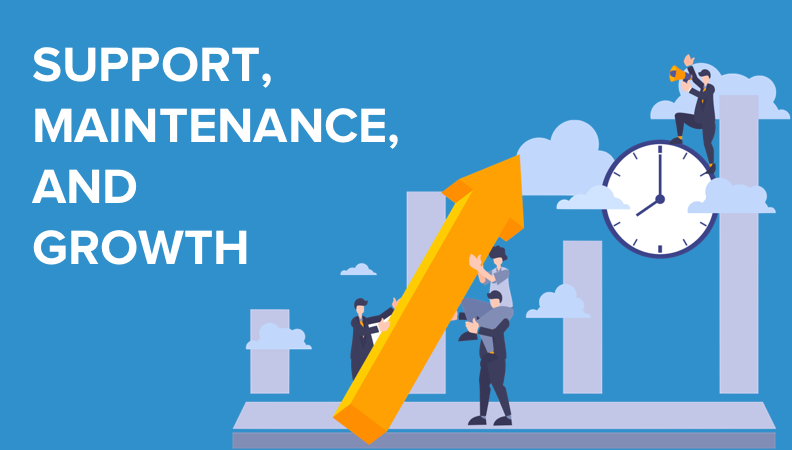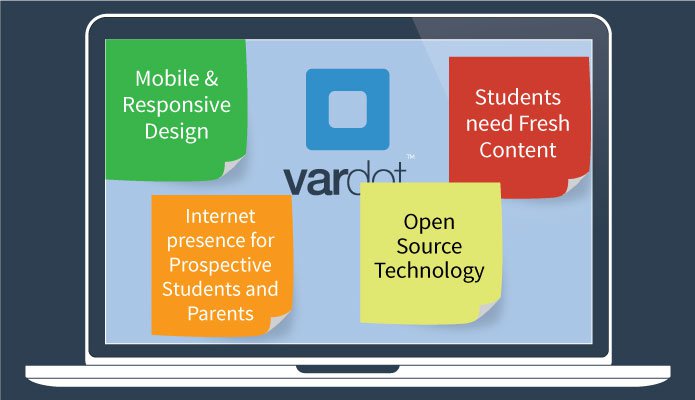- Solutions
- For Industry
- By Need
- Products
- VarbaseEnterprise CMS Distribution for Drupal
- Uber PublisherEnterprise Digital Media Platform Builder
- VardocDrupal Knowledge Base Platform
- Campaign StudioOpen Marketing Platform - by Acquia
- Open SocialSocial Business Platform - by Open Social
- Services
- Strategy
- Design
- Development
- Migration
- Support and MaintenanceSupport and Maintenance
- DevOps
- Digital Marketing

Datasheet

- Clients
- Ideas
- About
- Contact Us

Why Choose Drupal CMS?
When launching a website, one of the initial decisions you'll face is selecting an appropriate CMS (Content Management System). In this blog post, we explore the two main types of CMSs — headless and traditional. We also look at the scenarios in which the Drupal CMS would be the optimal solution.
What is a CMS?
A CMS (Content Management System) is a software platform designed to help users create, edit, publish, and manage website content without requiring extensive technical expertise. They can access and modify content via different devices, including smartphones, tablets, and desktop computers, using a web browser.
While built on scripting languages, a CMS is hosted on a server, typically equipped with both a database and a web server. The majority of the website's content, along with various settings and configurations, is stored within this database.
A key component of any CMS is its underlying operational framework, often referred to as a "stack." This stack combines the operating system, scripting language, database, and web server. One of the most popular and widely-adopted, flexible, and cost-effective stacks is LAMP. This acronym stands for:
Linux: The operating system.
Apache: The web server responsible for processing requests and delivering web pages to users' browsers.
MySQL: A relational database system where website data is stored.
PHP: A server-side scripting language used for web development.
What CMS Types Exist?
In content management, we mainly come across two CMS types: traditional and headless. Understanding their core differences is important when deciding which one best fits your needs. Let’s explore the differences between them.
Traditional CMS
Traditional content management systems streamline the process of creating, managing, and publishing content. They operate on a monolithic design, binding the backend (where content is crafted) and the frontend (where content is displayed) tightly together. In these systems, once you publish content, it's usually set in its displayed format.
In a traditional system, content is not stored in modular components, making it difficult to reformat or repurpose content units. Adding new functionality or features usually involves using plugins.
Traditional content management systems have the following limitations:
- Restricted cross-device content delivery, making it hard to serve the same content on different devices.
- Limited scalability, which can hinder the system's ability to handle increased content or user traffic.
- Dependency on developers who are specifically skilled in the chosen CMS.
- Reduced flexibility in customization and adaptability.
- Increased time and financial investment required for maintenance and enhancements.
Headless CMS
A headless CMS operates solely in the backend, without a fixed frontend. Content is stored in a database but is not limited to a specific website. Instead, it can be accessed by various frontends through simple interfaces.
Many headless CMS platforms offer a graphical user interface similar to traditional CMS versions, making content creation simple and intuitive. Additionally, headless CMSs are often available as Software-as-a-Service (SaaS).
So, a headless CMS offers numerous benefits:
- Flexibility and freedom of presentation
- Improved performance and faster page load times
- Seamless omnichannel experiences
- Future-proofing and adaptability to new technologies
- Enhanced team collaboration and productivity
- Agile development and scalability
- Easy integration with other systems and tools
- Content reuse and localization capabilities
If you need more flexibility, scalability, and freedom to use different frontend technologies, a headless CMS is the best option.
What Are the Features of Drupal CMS?
Drupal is a dynamic CMS built upon the LAMP stack. Its modular design allows users to effortlessly add or remove features by adjusting modules. You can totally overhaul the website's appearance by incorporating or discarding various themes.
The basic Drupal package, known as "Drupal Core," includes PHP scripts for standard CMS functions, a range of optional modules and themes, as well as JavaScript, CSS, and image resources. Numerous additional modules and themes are available for download from the Drupal.org website.
Drupal offers flexibility across various tech platforms:
- While Linux is usually the standard, operating systems like Windows or Mac OS can also be used.
- In addition to the widely-used Apache, other web servers such as Nginx or IIS are equally valid alternatives.
- In addition to MySQL, Drupal is compatible with other databases, such as PostgreSQL, SQLite, or MySQL-compatible options like MariaDB or Percona.
- You can adopt different operating systems, web servers, and databases can be adopted, but the fundamental scripting in PHP remains unchanged.
Why Choose a Drupal CMS?
When starting a website development project, you'll come across various options for CMS platforms and hosted solutions. Here's why Drupal CMS may be a go-to choice for you:
Consistency
While creating a basic website using static HTML pages is a straightforward and quick process, setting up a website with a Drupal CMS might involve more initial work. Yet, this comes with benefits such as online editing, which is crucial for maintaining consistency, especially on larger sites, and enabling advanced features that rely on a database.
Flexibility
Numerous CMS platforms are designed for specific purposes, such as blogging or managing community memberships. However, if your site requires slightly different functionality from what a CMS is designed for, a Drupal CMS becomes more beneficial due to its flexibility and versatility.
Continued Improvement
Designing your own custom CMS for your needs might seem tempting. However, starting with a robust CMS like Drupal usually brings more benefits because of its wide range of built-in features. User account and content management in Drupal is constantly improved through testing, bug fixes, and security updates.
Open Licensing
Free platforms might come with restrictive license terms that limit modifications and enhancement. In contrast, Drupal benefits from open licensing and strong global community support, making it a compelling choice.
Conclusion
Whether you're launching a personal project or steering a large organization's digital journey, a Drupal CMS offers numerous benefits that include compatibility with various backends, scalability, and freedom of adopting different frontend tools. Robust and secure, it continues to evolve, adapting to the ever-changing technological landscape.



